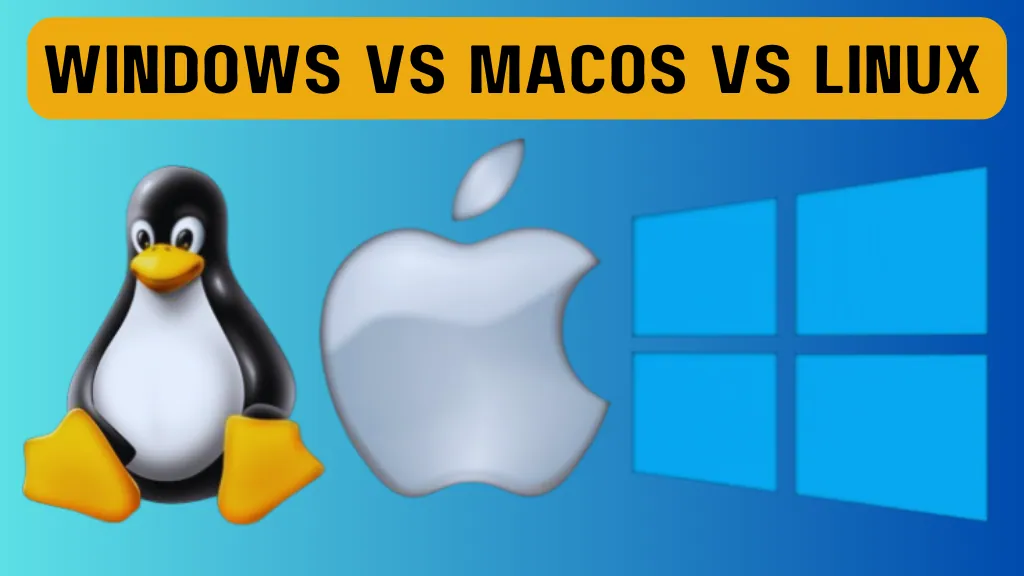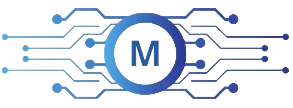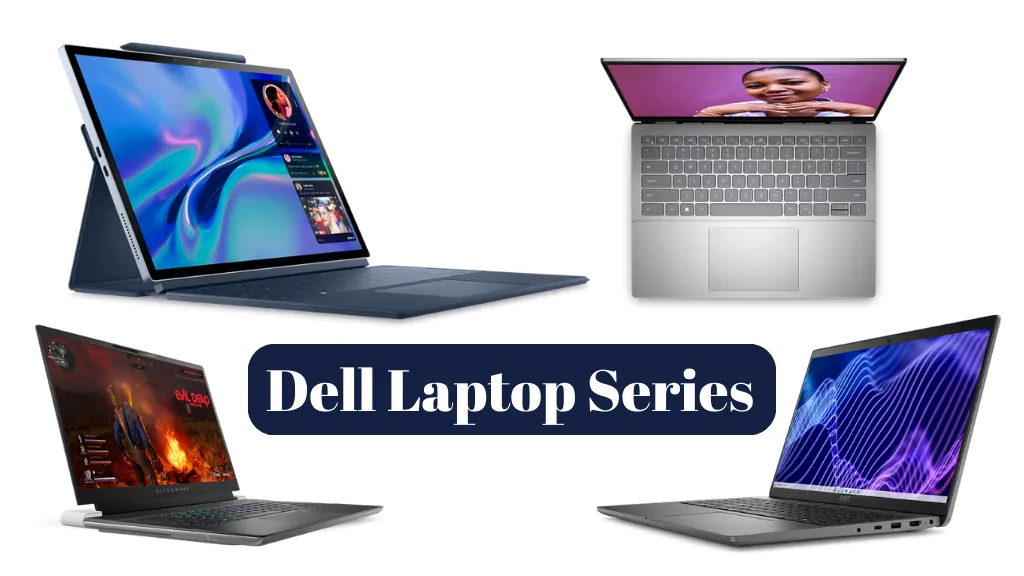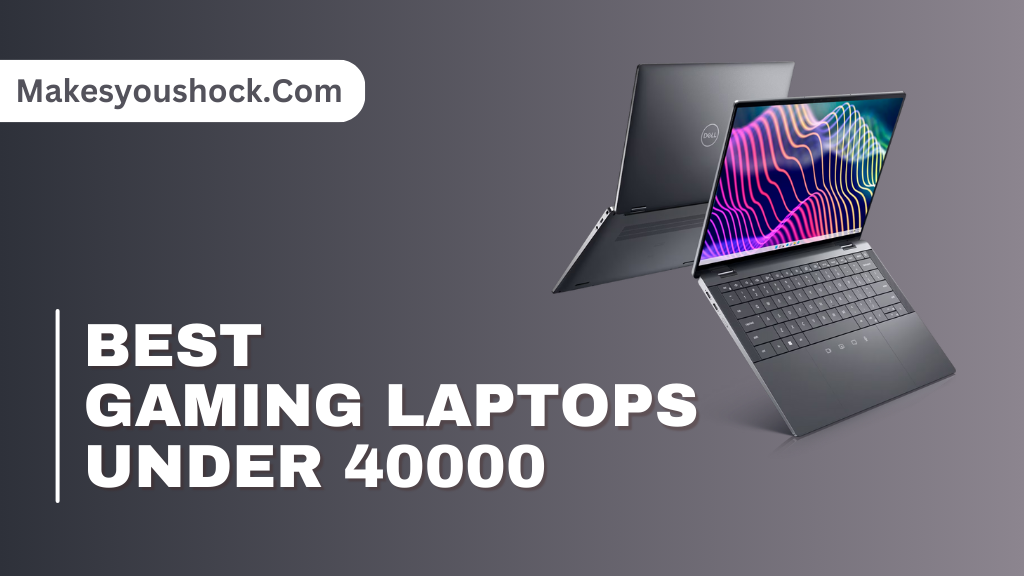Windows vs macOS vs Linux: The choice of operating system (OS) can significantly impact your daily productivity, creativity, and overall experience. Windows Vs macOS Vs Linux stand out as the three major contenders, each with its own set of strengths and weaknesses. But which one is the right fit for you? we embark on a journey to explore and compare these operating systems, helping you make an informed decision tailored to your specific needs.

Unveiling Windows: The Powerhouse OS
Windows is arguably the most recognized and widely used operating system on the planet. Its Universality owes much to its user-friendliness and broad software compatibility.
Key Features and Strengths
- User-Friendly Interface: Windows is renowned for its intuitive and familiar user interface. For many, it’s where their digital journey begins, making it accessible to people of all ages and backgrounds.
- Vast Software Ecosystem: One of Windows’ indubitable strengths is its enormous software library. From productivity tools to creative software and a multitude of games, Windows has it all.
- Broad Hardware Compatibility: Windows supports an extensive range of hardware configurations, making it the go-to choice for users with diverse computing needs.
Limitations and Considerations
- Licensing Costs and Versions Confusion: While Windows offers various editions, understanding the licensing and version differences can be perplexing. Some versions come with significant licensing fees.
- Security Challenges and Updates: Windows has faced security challenges over the years, making it a target for malware and cyberattacks. Regular updates are essential for maintaining a secure system.
- System Slowdowns and Bloatware: Over time, Windows systems may experience performance degradation due to the accumulation of temporary files and bundled software. Regular system maintenance is necessary to keep it running smoothly.
Discovering macOS: The Apple Ecosystem
macOS, the proprietary operating system developed by Apple, is synonymous with elegance and seamless integration within the Apple ecosystem.
Key Features and Strengths
- Elegant and User-Friendly Interface: macOS is celebrated for its clean and aesthetically pleasing interface. It prioritizes simplicity and ease of use, making it a favorite among creative professionals.
- Integration with the Apple Ecosystem: If you’re already invested in the Apple ecosystem with devices like iPhones, iPads, and Apple Watches, macOS provides a harmonious and seamless experience.
- Robust Software Availability: Despite being a closed ecosystem, macOS boasts a robust library of software, including industry-standard creative applications like Final Cut Pro and Logic Pro.
Limitations and Considerations
- Limited Hardware Options: macOS is exclusively designed for Apple hardware, limiting your choices. This exclusivity often comes with a premium price tag.
- Constraints on Customization: Apple prioritizes a consistent user experience, which means limited customization compared to Windows or Linux.
- Financial Investment Required: Owning and maintaining Apple hardware and software can be more expensive than other options.
Embracing Linux: The Open-Source Revolution
Linux Completely Different to Windows Vs macOS, is an open-source operating system that empowers users with unparalleled customizability and flexibility.
Key Features and Strengths
- Open-Source Nature and Community-Driven Development: Linux’s open-source nature allows anyone to view, modify, and distribute its source code. This fosters innovation and community-driven development.
- Customizability and Flexibility: Linux enthusiasts revel in the system’s customizability. You can tailor every aspect of your Linux-based system, from the desktop environment to the kernel itself.
- Diverse Linux Distributions for Various Use Cases: Linux comes in various distributions (distros), each tailored to specific use cases. Whether you seek stability (Debian), cutting-edge software (Arch), or lightweight performance (Lubuntu), there’s a Linux distro for you.
Limitations and Considerations
- Learning Curve: Linux can be daunting for beginners due to its command-line nature and less intuitive interface. However, user-friendly distributions like Ubuntu ease the transition.
- Software Compatibility: While Linux boasts a vast repository of free and open-source software, compatibility with certain proprietary applications, especially in creative fields, can be a challenge.
- Hardware Compatibility and Driver Availability: Linux’s hardware support has improved significantly, but some specialized hardware may lack proper drivers, impacting functionality.
Finding Your Ideal Operating System Between Windows vs macOS vs Linux
The ideal operating system for you depends on your specific needs and preferences. Let’s explore scenarios where each OS excels:
Ideal Scenarios for Using Windows
- Familiarity and Ease of Use: Windows is perfect for those who prioritize a user-friendly interface that requires minimal learning curve.
- Software Compatibility: If you rely on specific Windows-only applications, like Microsoft Office or Adobe Creative Cloud, Windows is the natural choice.
- Gaming: Gamers benefit from Windows’ vast library of game titles and DirectX support.
- Broad Hardware Support: If you plan to use specialized or cutting-edge hardware, Windows is more likely to offer comprehensive driver support.
Ideal Scenarios for Using macOS
- Seamless Apple Ecosystem Integration: If you’re deeply entrenched in the Apple ecosystem and own multiple Apple devices, macOS provides a seamless experience.
- Creative Professions: macOS is favored by creative professionals for its optimized software like Final Cut Pro and Logic Pro.
- Stylish and Intuitive Design: If you appreciate an elegant and intuitive interface, macOS is sure to delight.
Ideal Scenarios for Using Linux
- Customization and Control: Linux is the go-to choice for users who relish the opportunity to tweak and tailor their operating system to their liking.
- Open-Source Advocates: Those who appreciate open-source principles and community-driven development will find Linux aligns with their values.
- Server Environments: Linux is a top choice for server deployment due to its stability and security features.
- Cost-Conscious Users: Linux is free and can breathe new life into older hardware, making it a cost-effective option.
Head-to-Head Comparison: Windows vs macOS vs Linux
Now, let’s conduct a head-to-head comparison On Windows vs macOS vs Linux, to help you decide which operating system aligns with your needs.
User Interface and Ease of Use
- Windows: Windows offers a user-friendly and intuitive interface. It’s a great choice for users who prioritize familiarity and ease of use.
- macOS: macOS is renowned for its elegant and intuitive design. If you appreciate a user-friendly interface with a modern and visually appealing aesthetic, macOS is a strong contender.
- Linux: Linux’s interface varies depending on the distribution and desktop environment. While some, like Ubuntu, aim for user-friendliness, others may require a learning curve for newcomers.
Software Availability and Compatibility
- Windows: Windows boasts an extensive software ecosystem, including mainstream productivity suites and gaming titles. Compatibility is rarely an issue.
- macOS: macOS offers a robust selection of software, particularly for creative professionals. However, it falls short in terms of gaming titles compared to Windows.
- Linux: Linux offers a vast repository of free and open-source software, covering a wide range of needs. However, compatibility with certain proprietary applications may require workarounds.
Customization and Adaptability
- Windows: Windows provides customization options but is more limited compared to Linux. Users seeking deep customization may find it restrictive.
- macOS: While macOS emphasizes a consistent user experience, it offers limited customization compared to Windows and Linux.
- Linux: Linux is celebrated for its customization options. You can tailor your system to your exact specifications, from the desktop environment to the kernel.
Hardware Compatibility and System Requirements
- Windows: Windows supports a wide range of hardware configurations, making it a versatile choice. However, resource-intensive versions may demand powerful hardware.
- macOS: macOS is designed exclusively for Apple hardware, ensuring a tightly integrated experience. However, this limits your hardware options and often comes with a premium price tag.
- Linux: Linux runs efficiently on a variety of hardware, making it suitable for older machines and resource-constrained systems. It’s known for its versatility.
Security Features, Privacy Considerations, and Updates
- Windows: Windows faces security challenges and is a common target for malware. Regular updates are crucial for maintaining a secure system. Windows 10 and 11 have enhanced security features.
- macOS: Apple prioritizes security and privacy. macOS benefits from the walled garden approach and typically experiences fewer security threats.
- Linux: Linux is known for its security features, but the level of security can vary based on your choices and configurations. Privacy settings are often in the user’s hands, enhancing control.
Cost and Licensing Models
- Windows: The cost of Windows varies depending on the edition. Some versions come with substantial licensing fees, while others offer free upgrades.
- macOS: macOS is exclusively available on Apple hardware, and its cost is included in the purchase of a Mac.
- Linux: Linux is free and open-source. You can install it on almost any hardware, making it an extremely cost-effective choice.
Making the Final Decision
After this detailed comparison, it’s time to make your decision. Consider the following steps Before Takiing A Decision On Windows vs macOS vs Linux
Weighing the Pros and Cons
- Windows: Choose Windows if you prioritize a user-friendly interface, software compatibility, and have no budget constraints.
- macOS: Opt for macOS if you’re deeply entrenched in the Apple ecosystem, value an elegant user interface, and are willing to invest in Apple hardware.
- Linux: Embrace Linux if you crave customization, open-source ideals, and cost-effectiveness.
Assessing Your Specific Needs and Preferences
Think about your specific use cases:
- Windows: Ideal for personal and professional use, especially in fields requiring specialized software or gaming.
- macOS: Suited for users deeply integrated into the Apple ecosystem, creative professionals, and those who appreciate a sleek interface.
- Linux: A great choice for tech enthusiasts, open-source advocates, server administrators, and anyone looking to optimize cost-efficiency.
Considering Future Growth and Development
- Windows: If you anticipate sticking with the Windows ecosystem and value a stable, consistent experience.
- macOS: If you’re committed to Apple’s hardware and software ecosystem and prioritize seamless integration.
- Linux: If you’re keen on expanding your technical skills, exploring open-source software, or have changing hardware needs.
Windows vs macOS vs Linux debate, there’s no one-size-fits-all answer. Your choice should align with your unique needs and preferences. Whether you opt for the familiarity of Windows, the elegance of macOS, or the freedom of Linux, each operating system offers distinct advantages. Consider experimenting with all three through virtualization or dual-boot setups to gain firsthand experience.




